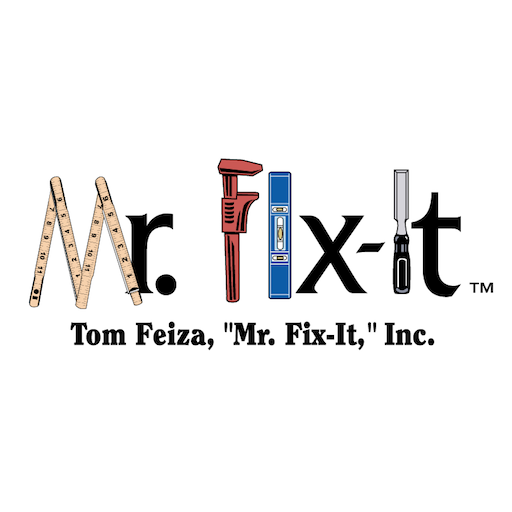By Tom Feiza, Mr. Fix-It, Inc., HowToOperateYourHome.com

It’s important to understand water softening systems and include basic information in your home inspections. The units must be set up and maintained, and the regeneration discharge must be handled properly. Most standards exclude water softeners but your customers need basic information when they operate their home.
Hard water is the rule
The majority – 85% – of homes have “hard water,” the common term for water with excess minerals. Hard water creates a buildup of deposits that can corrode piping and various fixtures. It leaves spots on dishes, makes surfaces hard to clean, and interferes with laundry detergent and shampoo.
Water softener provides the solution
A water softener removes the offending minerals (magnesium and calcium) and adds a small amount of sodium. Softeners can also remove a small concentration of iron. The softener is often located near the water main (Illustration P051). Normally it is connected to pipes for hot water and bathroom fixtures. It is not routinely connected to tap water in the kitchen because of the slight amount of sodium added to the water. Also, the softener is not connected to exterior hose bibs.
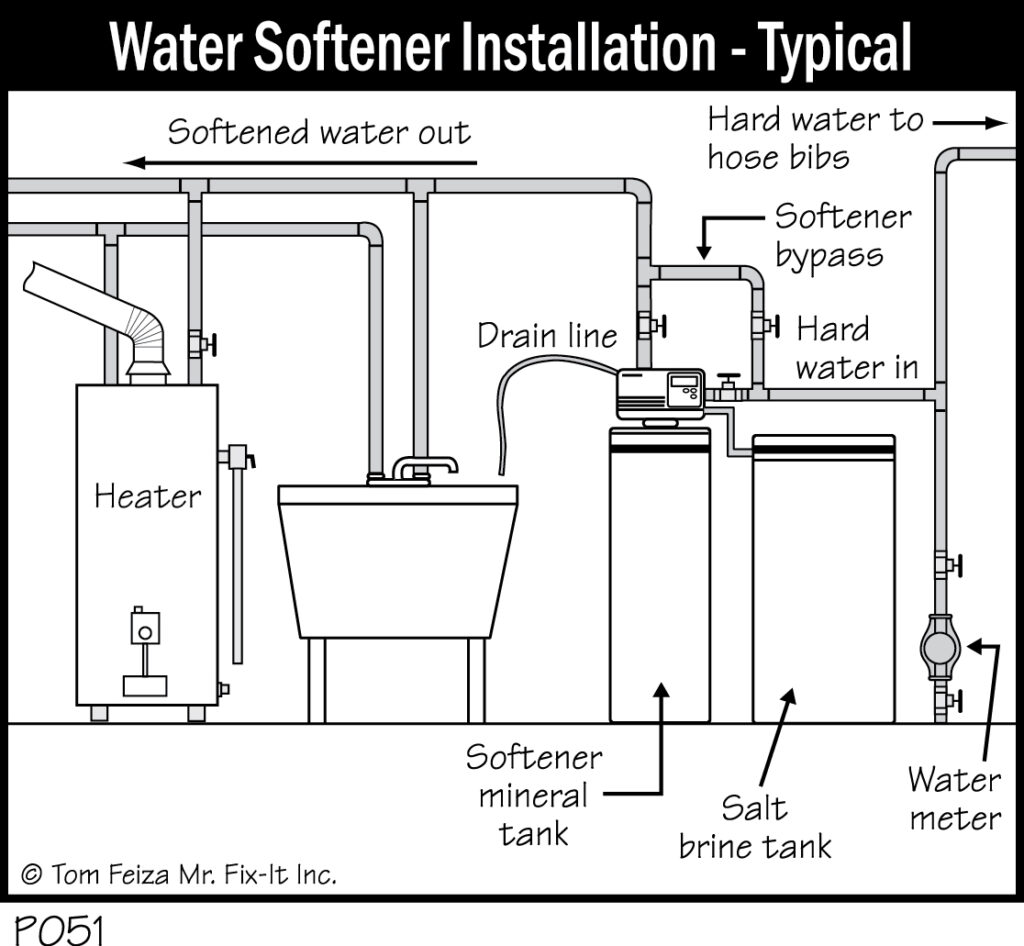
In the illustration, note the bypass piping, as well as the drain line to the laundry sink, which provides an air gap. It is important that the drain line does not create a cross-connection to potable water. The drain line should discharge above the rim of the sink or above an open “P” trap.
Two kinds of water softener tanks
Illustration P089 shows a softener with two tanks: a salt (brine) tank and a resin tank. Illustration P090 shows a softener with a resin tank inside the larger salt brine tank. Both use the same principle; they’re just different tank arrangements. In each case, salt placed in the brine tank soaks in water, forming a salt water solution called brine.
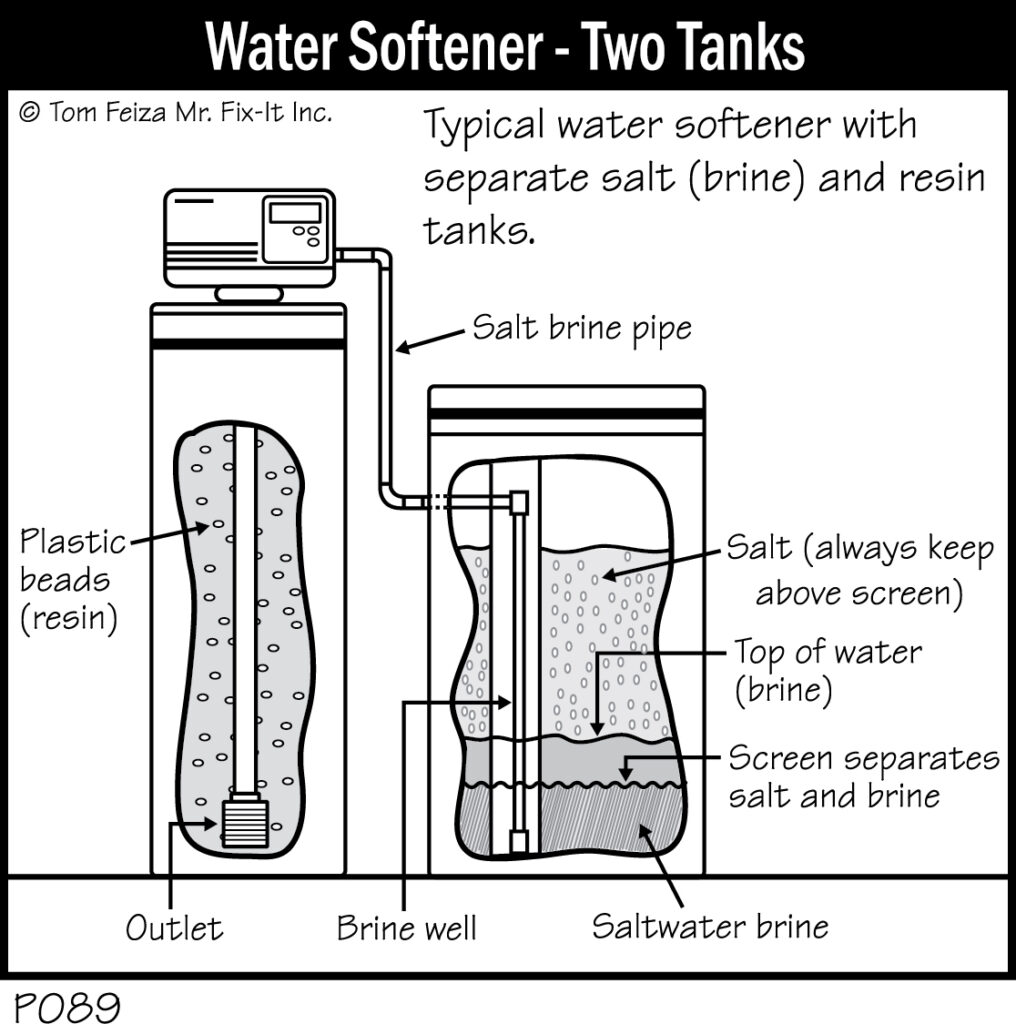
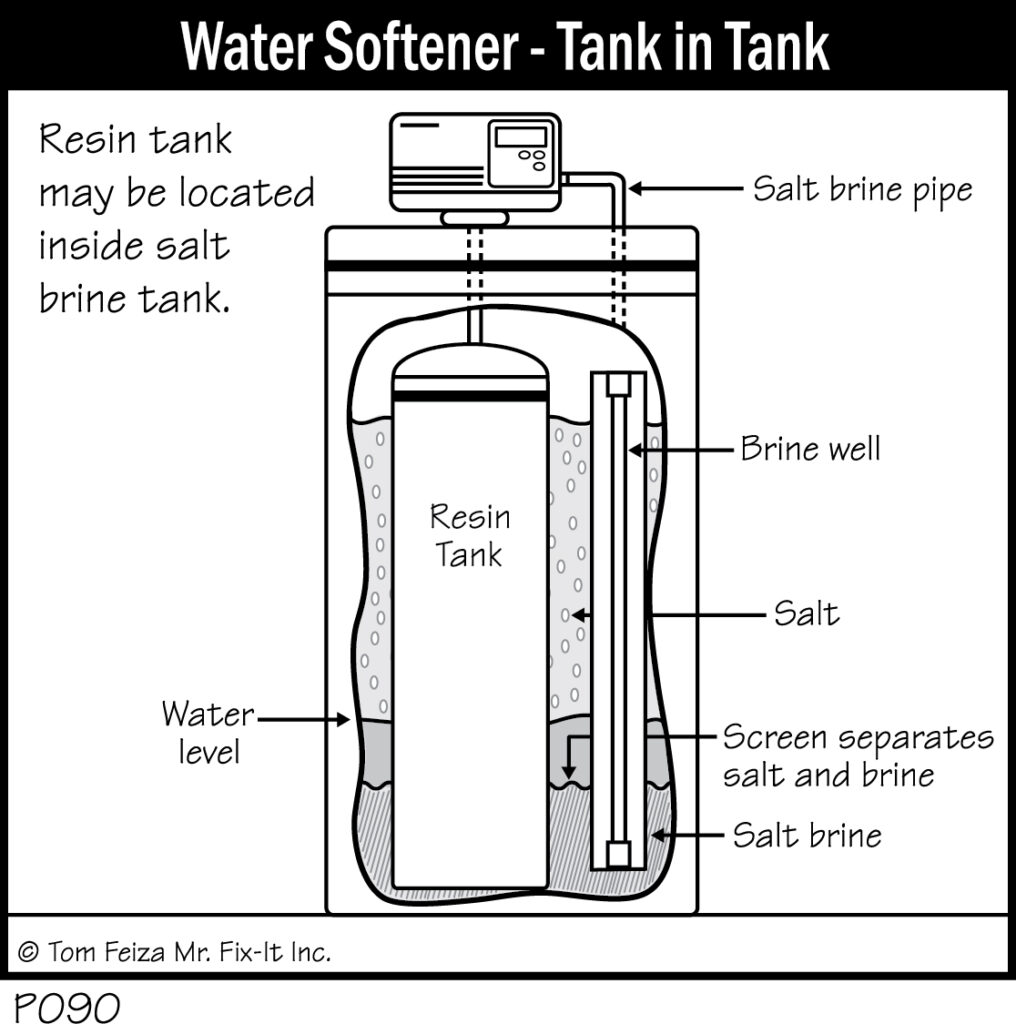
Softener operation
The brine is flushed through the resin on a routine basis, based on a time clock or water usage meter. Salt ions attach to the resin. As hard water flows through the resin tank, elements such as magnesium and calcium precipitate onto the resin surface. In the process, a small amount of salt is added to the water.
When the resin is loaded with minerals, the system recycles with salt brine, removing the minerals and flushing them away with rinse water. To maintain the system, the homeowner must keep an adequate amount of salt in the brine tank. The homeowner must also set the timeclock so the regeneration occurs as water is used. A metered system automatically recycles as needed and there is no timeclock. The system recycles when no one in the household is using water – usually sometime after midnight – another setting.
Bypass valves
Every softening system has a bypass setup for use during maintenance and repair. Illustration P029 shows a system that uses three valves in the supply and discharge piping. Illustration P091 shows a special valve/system in which access to the bypass lies behind the control panel.
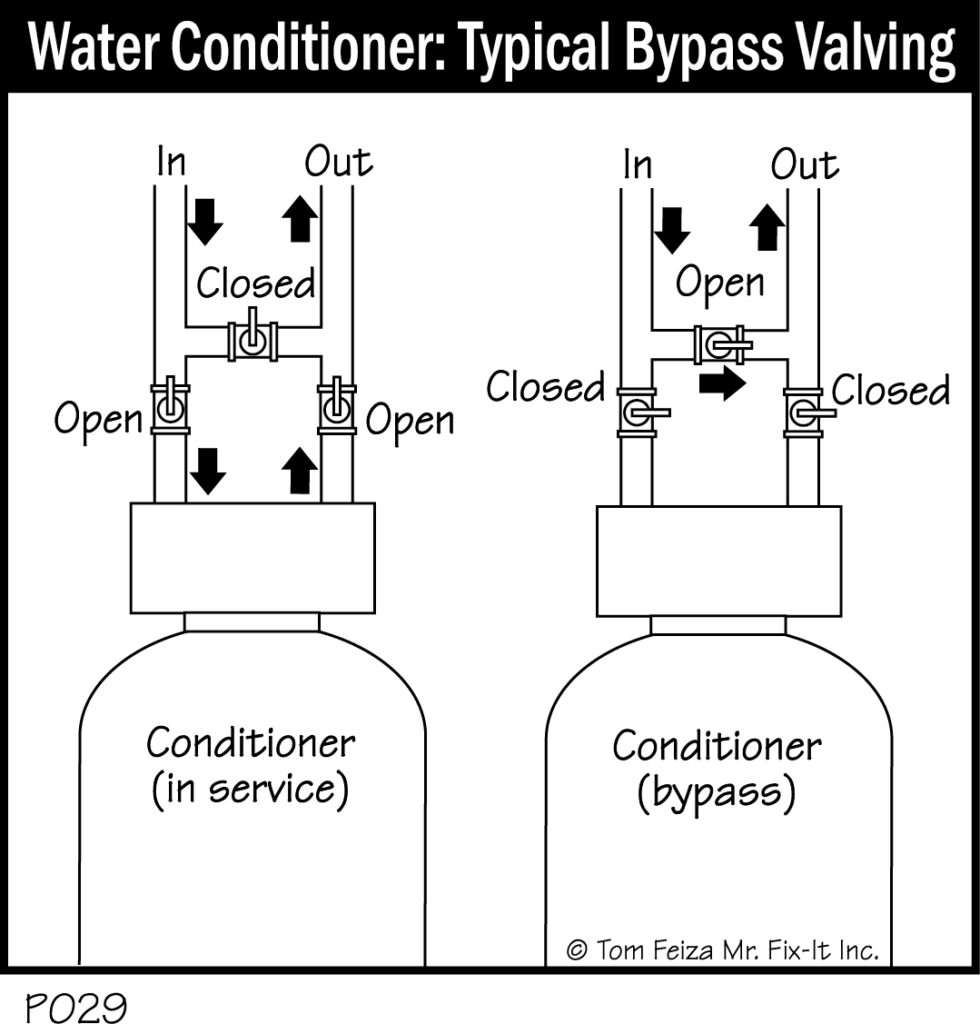

The takeaway
A basic understanding of water softeners helps you describe the systems to your customers. If they’re unfamiliar with softener operation, a specialist should evaluate their water usage and set up the system accordingly. Homeowners also need to add the correct type and amount of softener salt and periodically monitor the system’s operation. They should understand that the system cycles periodically at night and discharges a significant amount of water when recharging.
Photos / Illustrations / Captions
Illustration P051 Water Softener Installation – Typical
Illustration P089 Water Softener – Two Tanks
Illustration P090 Water Softener – Tank in Tank
Illustration P029 Water Conditioner Typical Bypass Valving
Illustration P091 Water Softener Bypass
